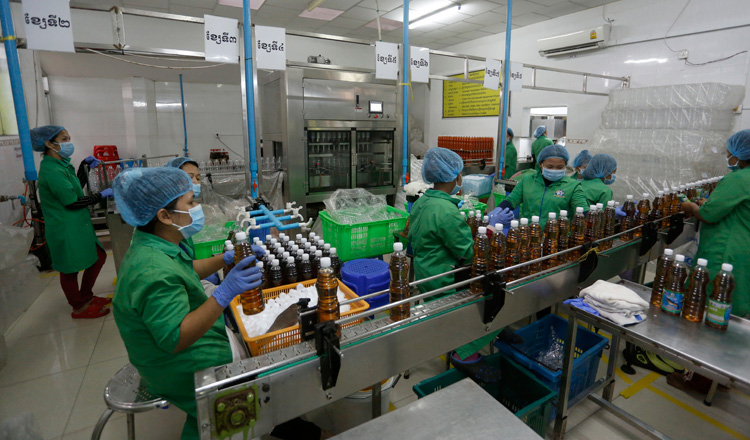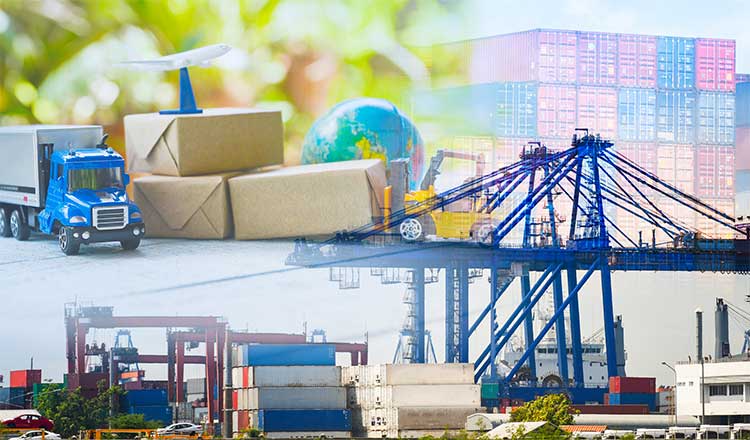Philippine merchandise exports closed 2021 with a 14.5% growth with value reaching USD 74.6B, based on preliminary data from the Philippine Statistics Authority (PSA). Despite the emergence of a new COVID-19 variant that has impeded the full recovery of the global economy, Philippines exported goods increased in December which added USD 6.3B in the country’s export earnings, an increase of 7.1% from USD 5.9B in December 2020. Current exports also grew by 5.2% compared to USD 70.9B in the full year 2019 and 9.0% compared to USD 5.8B in December 2019.
Department of Trade and Industry (DTI) Secretary Ramon M. Lopez reported, “December PSA data also showed that seven of the top 10 major commodity groups have recorded increases in annual export sales, in which five of these 7 gainers breached their pre-COVID export levels, led by coconut oil (135.2%). As sales of coconut oil continue to accelerate, other coconut products are also gaining traction in the global market.”
According to Research and Markets, the demand for coconut products is expected to grow significantly in the future as the consumption of processed food products grows due to the rise in urban population.
Other commodity groups that recorded large export growths include other manufactured goods (53.5%), chemicals (43.0%), machinery and transport equipment (19.2%), electronic equipment and parts (16.5%), other mineral products (4.9%), and electronic products (1.8%).
Electronics exports amounted to USD 3.92B in December 2021 which brought the year-to-date (YTD) export figures to USD 45.92B 12.9% higher compared to January-December 2020. Top Philippine electronics exports last month were components/devices (semiconductors), electronic data processing, other electronics, telecommunication, and consumer electronics.
The World Semiconductor Trade Statistics (WSTS) expects the global semiconductor market to grow by 25.6% in 2021 with a market size reaching USD 553B. This will be the biggest jump in semiconductor sales since the 31.8% increase in 2010. Moreover, the robust global consumer demand pushed all major product categories to double-digit growth rates, except for optoelectronics.
For December 2021, the US imported USD 1.0B worth of goods from the country while China imported USD 925.2 million. Philippine exports in the two markets accounted for 31.4% or USD 23.4B of the country’s total exports in 2021.
Meanwhile, preliminary data for 2021 shows that Philippine exports grew in its top five markets: US (18.3%), China (17.5%), Japan (6.8%), Hong Kong (7.6%), and Singapore (11.2%).
The Trade Secretary shared that more than half of Philippine commodity groups have recovered from the adverse economic impact of COVID-19 and have breached pre-pandemic export levels.
He said, “Our focus for the first half of 2022 is to unlock the unrealized export potential of the country and empower our exporters in seizing opportunities in the recovery of global markets. Unlocking trade barriers or frictions alone could add another USD 20B to our export earnings.”
Based on a recent study conducted by the International Trade Centre (ITC), the Philippines has an unrealized export potential of USD 49B, of which USD 20B is due to product-market-specific frictions and USD 29B is based on the projected growth of the Philippines and its export markets. According to the study, these trade frictions are often linked to lack of market knowledge, difficulties in complying with market requirements, and difficulties in matching buyers with the right suppliers, among others.
Reinforcing the importance of the coconut industry in Philippine exports, ITC’s Export Potential Assessment has also identified coconut as one of the products with the highest export potential among the agricultural products with more complex value chains. The DTI will focus its efforts on promoting high-value coconuts, targeting the health and wellness market and other non-food uses for coconut, aside from the traditional food product segments.
“As part of our initiatives to assist coconut exporters to unlock the unrealized export potential, we will be providing technical and marketing support to selected MSMEs through training and coaching on export management and marketing, including support to their participation in international trade fairs and business matching sessions,” said DTI Undersecretary for Trade Promotion Abdulgani Macatoman.
He added, “First for this year will be the export promotion activities in the Middle East/North Africa (MENA) region, including in-store promotion of Philippine food products in leading supermarkets in the United Arab Emirates (UAE), participation in Gulfood, and a business matching session in Dubai.”
Other products with high export potential include are bananas, pineapple, and tuna. The study estimates that Philippine agriculture, food, and beverage exports still have an unrealized export potential of USD 5.2B.
For manufacturing, the sub-sectors that are technologically advanced and exhibit important export growth opportunities are motor vehicles and parts, plastics and rubber; optical products, watches, medical instruments, and machinery and electricity.
The ITC study was conducted as part of the ARISE Plus Philippines Project supported by the European Union. The Project aims to foster inclusive economic growth in the Philippines through improved international trade performance and competitiveness as well as economic integration.
Sec. Lopez added, “The ITC Export Potential Assessment validates and quantifies the potential of our export industry to grow by nearly twice its export levels in the next five years if we invest in increasing our production capacities and unlock or address these trade frictions.”
Source: Department of Trade and Industry Philippines
























